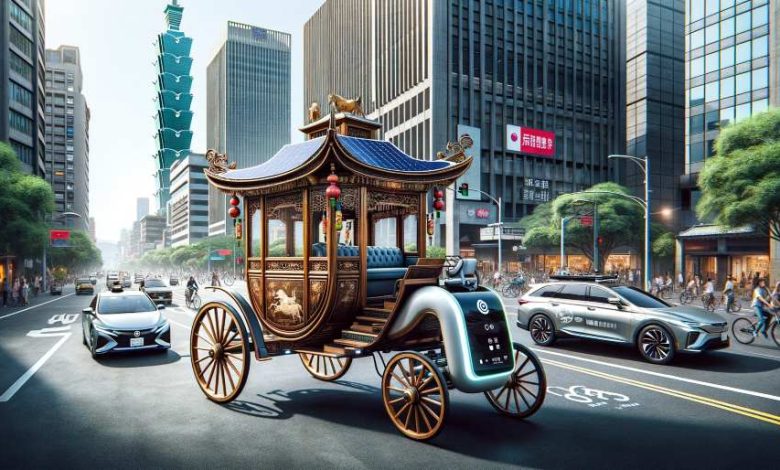The Future of Transportation Taiwan Self-Driving Gharry

Taiwan’s self-driving gharry represents a leap forward in transportation technology, merging tradition with innovation. In this article, we delve into the concept of the self-driving gharry in Taiwan, exploring its potential impact and the advancements driving its development.
What is a Self-Driving Gharry?
A self-driving gharry is a modern adaptation of the traditional horse-drawn carriage, equipped with autonomous driving technology. This innovative concept combines the charm of a classic mode of transportation with the convenience and efficiency of self-driving technology.
The Evolution of Transportation in Taiwan
Taiwan has a rich history of transportation innovation, from its efficient public transit systems to its extensive network of high-speed railways. The introduction of the self-driving gharry represents the latest evolution in Taiwan’s transportation landscape, offering a unique blend of tradition and modernity.
Also Read: How to Start Airbnb an Business A Complete Guide
The Potential of Taiwan’s Self-Driving Gharry:
The self-driving gharry holds immense potential to revolutionize urban transportation in Taiwan and beyond. By leveraging autonomous driving technology, these vehicles can offer safe, efficient, and environmentally friendly transportation solutions for residents and tourists alike.
Advantages of Self-Driving Gharry
Self-driving gharry offers several advantages over traditional transportation options, including:
Enhanced Safety
Autonomous driving technology reduces the risk of accidents by minimising human error.
Increased Efficiency
Self-driving gharry can optimize routes and schedules, improving overall efficiency and reducing travel times.
Environmental Benefits
By utilising electric or hybrid propulsion systems, self-driving gharry can help reduce carbon emissions and mitigate environmental impact.
Challenges and Considerations
Despite its potential, the adoption of self-driving gharry also poses challenges and considerations, including:
Regulatory Framework
The development and deployment of autonomous vehicles require robust regulatory frameworks to ensure safety and compliance with existing laws.
Public Acceptance
Acceptance and trust in self-driving technology may vary among the public, requiring education and outreach efforts to address concerns.
Infrastructure Integration
The successful implementation of self-driving gharry relies on the integration of supportive infrastructure, such as charging stations and dedicated lanes.
FAQs
How Does Self-Driving Gharry Work?
Self-driving gharry utilises a combination of sensors, cameras, and artificial intelligence algorithms to navigate roads and interact with traffic. These systems allow the vehicle to detect obstacles, pedestrians, and other vehicles, enabling autonomous operation.
Are Self-Driving Gharries Available for Public Use?
While self-driving gharry is still in the development stage, prototypes and pilot programs may be introduced for testing and evaluation. As technology advances and regulatory frameworks evolve, self-driving gharry may become available for public use in the future.
What Are the Potential Benefits of Self-Driving Gharry?
Self-driving gharry offers numerous benefits, including improved safety, increased efficiency, and reduced environmental impact. By leveraging autonomous technology, these vehicles have the potential to transform urban transportation and enhance the overall quality of life for residents.
Conclusion
Taiwan self-driving gharry represents a promising glimpse into the future of transportation. Combining the charm of traditional gharry with cutting-edge autonomous technology, these vehicles have the potential to revolutionise urban mobility, offering safe, efficient, and environmentally friendly transportation solutions. As development continues and regulatory frameworks evolve, self-driving gharry may soon become a common sight on the streets of Taiwan and beyond, reshaping the way we think about transportation in the 21st century.



